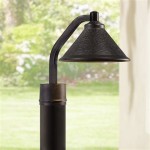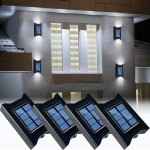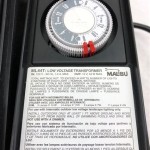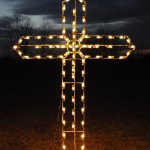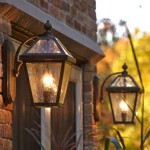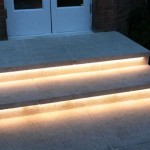The Standard Color Temperature for Outdoor Lighting
Outdoor lighting plays a crucial role in enhancing the aesthetics and safety of our surroundings. From illuminating pathways to accentuating landscaping, the right lighting can transform outdoor spaces. However, choosing the appropriate color temperature for outdoor lighting is essential to achieve the desired ambiance and functionality. This article delves into the concept of color temperature and its significance in outdoor lighting, exploring the standard color temperatures commonly used and the factors influencing their selection.
Understanding Color Temperature
Color temperature is a measure of the color of light emitted by a light source, expressed in Kelvin (K). It describes the perceived "warmth" or "coolness" of the light, with lower Kelvin values indicating warmer, more yellowish light, and higher Kelvin values indicating cooler, more bluish light. For instance, a candle flame emits light with a color temperature around 1,800K, while daylight typically falls between 5,000K and 6,500K.
In the context of outdoor lighting, color temperature significantly impacts the overall feeling and appearance of a space. Warmer color temperatures create a cozy and inviting ambiance, while cooler color temperatures tend to be more stimulating and energizing. Understanding the nuances of color temperature allows for informed decision-making when choosing outdoor lighting fixtures.
Standard Color Temperatures for Outdoor Lighting
While the standard color temperature for outdoor lighting can vary depending on the specific application and the desired effect, several common ranges are widely adopted:
Warm White (2,700K - 3,200K):
Warm white lighting emits a soft, yellowish light, evoking a sense of warmth and comfort. It is commonly used in residential settings, creating a relaxing and inviting atmosphere. This color temperature is ideal for illuminating pathways, patios, and gardens, enhancing the natural beauty of landscaping and creating a cozy ambiance.
Neutral White (3,500K - 4,100K):
Neutral white lighting offers a balance between warmth and coolness, providing a more natural-looking light that closely resembles daylight. This color temperature is often employed in commercial settings, offering a clean and contemporary look. It is also suitable for outdoor spaces where clarity and visibility are crucial, such as parking lots and security lighting.
Cool White (4,500K - 5,000K):
Cool white lighting emits a bright, bluish-white light, enhancing visibility and creating a more energetic feel. It is frequently used in applications where visibility is paramount, such as streetlights and safety lighting. While it can provide excellent illumination, cool white lighting may appear harsh in residential settings and can be less inviting compared to warmer color temperatures.
In addition to the standard ranges, other specialized color temperatures are available for specific applications:
Daylight (5,500K - 6,500K):
Daylight color temperature mimics natural daylight, providing a bright and crisp light ideal for outdoor spaces where visibility is paramount. It is commonly used in commercial settings, such as storefronts and public spaces, where it can enhance the visibility of merchandise and attract attention.
Pure White (7,000K - 8,000K):
Pure white lighting offers a very bright, bluish light, resembling the color of a clear sky. It is often used in industrial settings, particularly in areas where high visibility is required for safety and productivity. However, it is less commonly used in residential settings.
Choosing the Right Color Temperature
Selecting the appropriate color temperature for outdoor lighting involves considering several factors:
Functionality:
The primary function of the lighting plays a crucial role in determining the ideal color temperature. For example, pathway lighting may benefit from a warmer white, while security lighting may require a cooler white for enhanced visibility.
Aesthetics:
The desired aesthetic of the outdoor space should align with the chosen color temperature. Warmer white can enhance the warmth and intimacy of a patio or garden, while cooler white can create a more modern and vibrant ambiance.
Surroundings:
The surrounding environment influences the perceived color temperature. For instance, a warm white light may appear less harsh in a heavily treed area than in an open, urban setting. Similarly, cooler white may be more appropriate for illuminating a brightly lit street.
Personal Preference:
Ultimately, personal preference plays a significant role in choosing the color temperature for outdoor lighting. Some individuals may favor warmer white for its cozy feel, while others may prefer a cooler white for its energizing effect.
By carefully considering these factors, individuals can select the most suitable color temperature for their outdoor lighting, enhancing the functionality, aesthetics, and overall appeal of their outdoor spaces.

Choose The Best Color Temperature For Your Outdoor Lighting Knowledge Base Super Bright Leds

Choose The Best Color Temperature For Your Outdoor Lighting Knowledge Base Super Bright Leds

Best Color Temperature For Outdoor Lighting Enhanced

What Is The Best Led Color Temperature For Outdoor Lighting

Color Of Outdoor Light Lighting Concepts Guide Interior

What Is Cct Ivins Night Sky

A Short Guide On What Colour Temperature Is Stanpro

Understanding Kelvin And Led Light Color Temperatures

The Difference Between Led Color Temperatures Spot

Kelvin Color Temperatures
Related Posts
